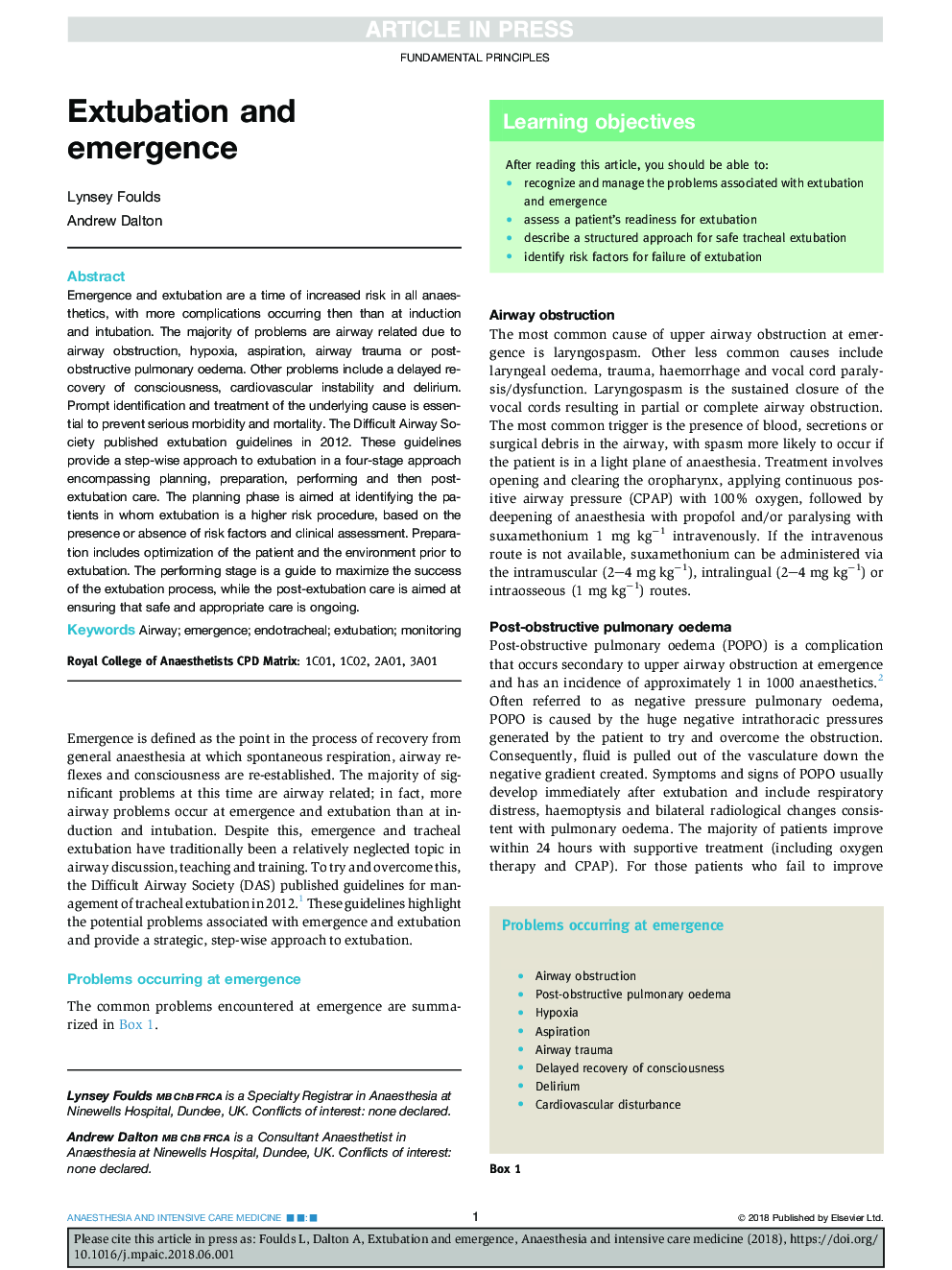| Article ID | Journal | Published Year | Pages | File Type |
|---|---|---|---|---|
| 8609809 | Anaesthesia & Intensive Care Medicine | 2018 | 6 Pages |
Abstract
Emergence and extubation are a time of increased risk in all anaesthetics, with more complications occurring then than at induction and intubation. The majority of problems are airway related due to airway obstruction, hypoxia, aspiration, airway trauma or post-obstructive pulmonary oedema. Other problems include a delayed recovery of consciousness, cardiovascular instability and delirium. Prompt identification and treatment of the underlying cause is essential to prevent serious morbidity and mortality. The Difficult Airway Society published extubation guidelines in 2012. These guidelines provide a step-wise approach to extubation in a four-stage approach encompassing planning, preparation, performing and then post-extubation care. The planning phase is aimed at identifying the patients in whom extubation is a higher risk procedure, based on the presence or absence of risk factors and clinical assessment. Preparation includes optimization of the patient and the environment prior to extubation. The performing stage is a guide to maximize the success of the extubation process, while the post-extubation care is aimed at ensuring that safe and appropriate care is ongoing.
Related Topics
Health Sciences
Medicine and Dentistry
Anesthesiology and Pain Medicine
Authors
Lynsey Foulds, Andrew Dalton,
